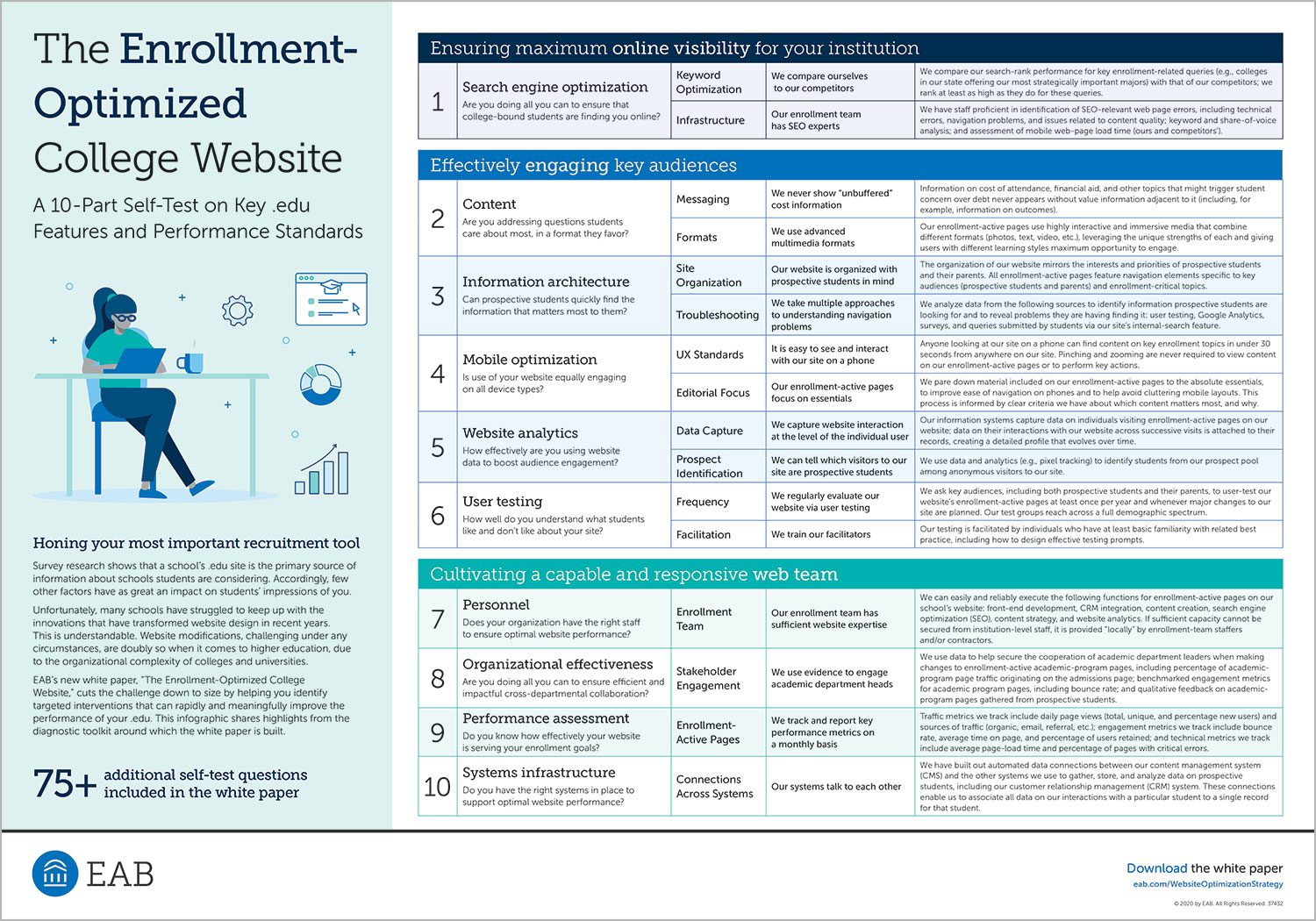Optimizing your college website to reach enrollment goals
Survey research shows that .edus are students’ primary source of information on schools they are considering. Accordingly, few other factors have as great an impact on students’ impression of you.
Unfortunately, many schools have struggled to keep up with the innovations that have transformed website design in recent years. This is understandable. Website modifications, challenging under any circumstances, are doubly so when it comes to higher education, due to the organizational complexity of colleges and universities.
EAB’s white paper, “The Enrollment-Optimized College Website,” cuts the challenge down to size by helping you identify targeted interventions that can rapidly and meaningfully improve the performance of your.edu. This infographic shares highlights from the diagnostic toolkit around which the white paper is built. Explore by scrolling down, or by downloading the PDF.
